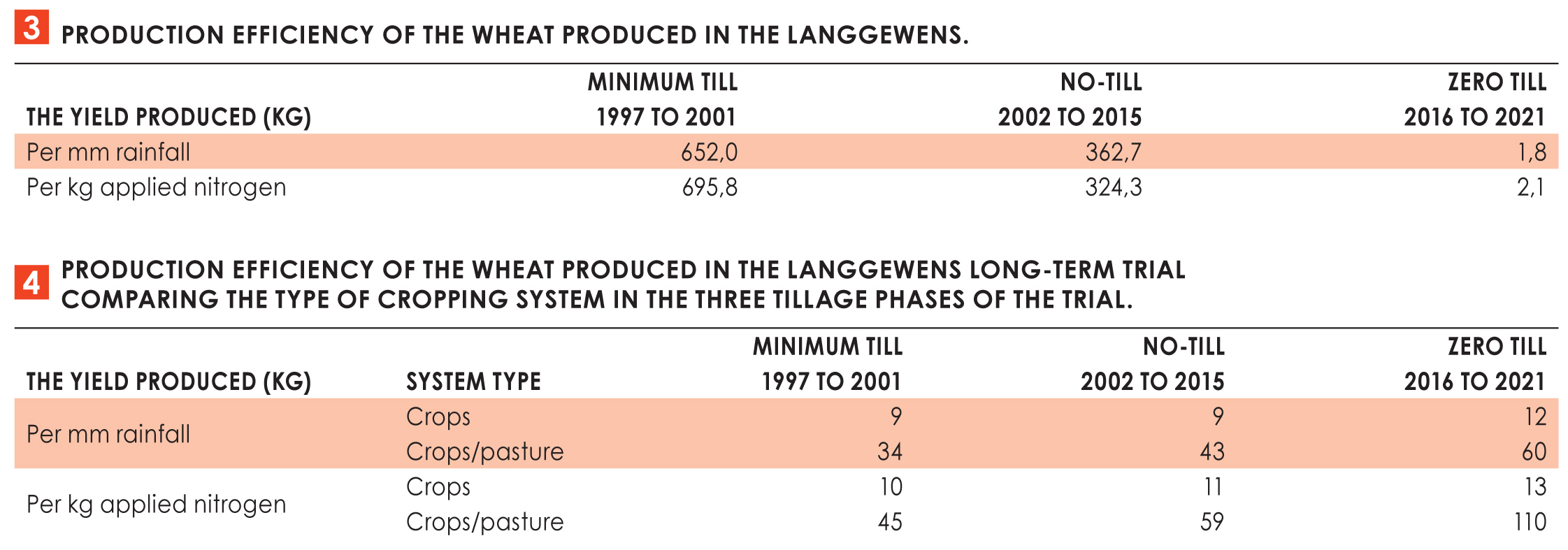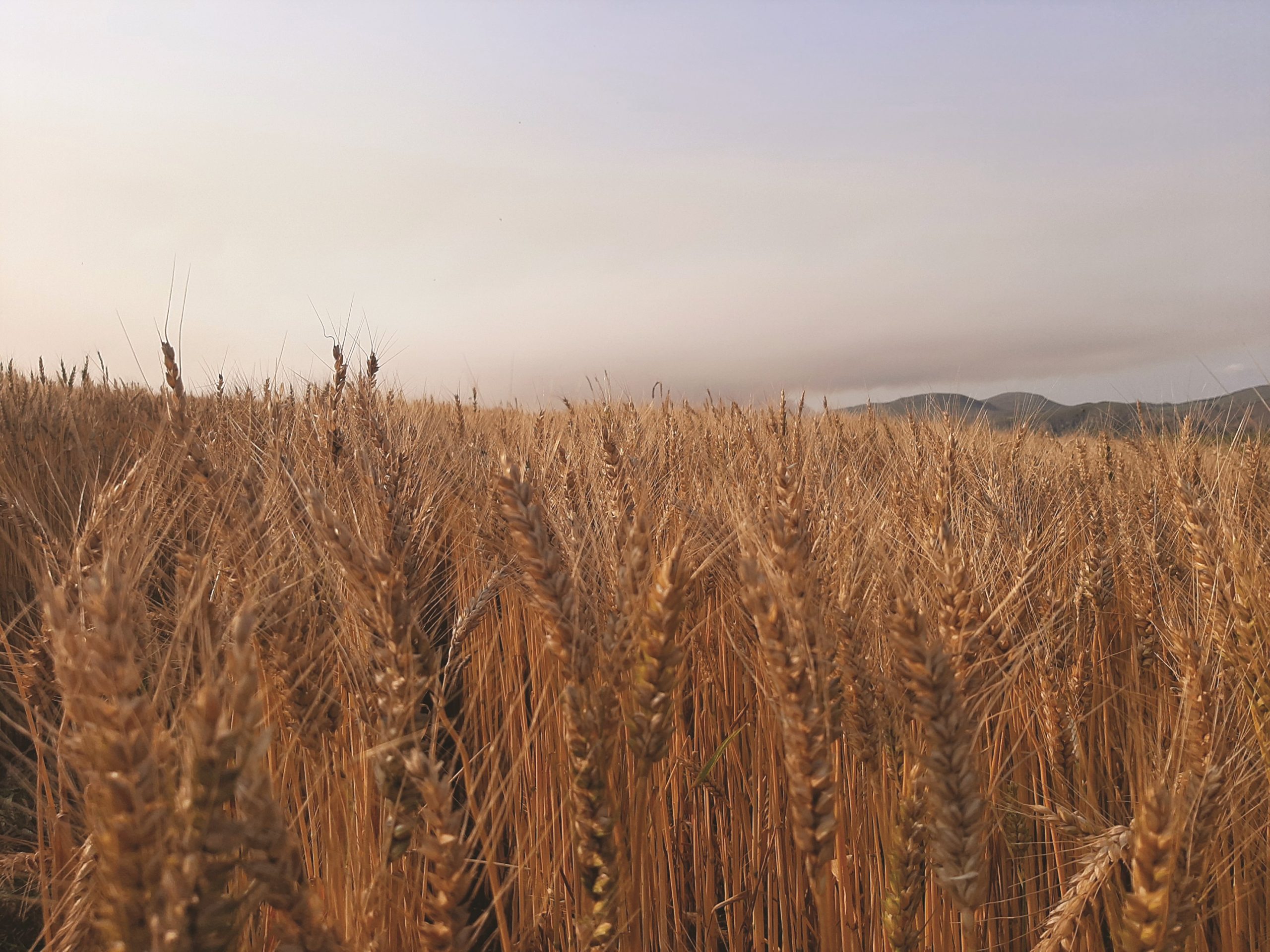
 Rens Smit, Sustainable Production System Research, Directorate Plant Sciences, Western Cape Department of Agriculture
Rens Smit, Sustainable Production System Research, Directorate Plant Sciences, Western Cape Department of AgricultureThe conservation agriculture (CA) system has been promoted worldwide as a sustainable alternative to conventional agriculture, with successful implementation in many countries. Significant adoption in some regions of South Africa has followed the world trend, but CA has yet to realise its full potential in terms of adoption.
In a summary report to the United Nation’s Food and Agriculture Organisation (FAO) in 2021, the adoption rate amongst South African producers varied from area to area, with the Western Cape leading with an estimated 51% full adoption of all three CA principles. The question is what impact the three CA principles have had on wheat production. This article will look at the annual wheat production compared to hectares planted to see what has transpired since CA was introduced to the Western Cape during the late 1980s.
The wheat data from 1990 to the end of the 2021 season were obtained courtesy of Grain SA, spanning 32 years over three decades. During these decades, the adoption of CA grew steadily in the Southern Cape at first and then exploded from 2000 onward when the Swartland producers joined in. Table 1 summarises the data from the 32 years. The average area planted under wheat has decreased from the first decade to the third by 14%, while total production increased by 35%. In the same period, the yield per hectare increased by 56,7%.
Improved wheat cultivars have also played a significant part in the improvements that have taken place over the three decades, along with enhanced production management strategies due to the possibilities opening up with crop rotation. One might argue that the improvement is not overly dramatic when viewed in the table above, which might be accurate. Still, with the CA production system, the effectiveness of yield per millimetre of rain and kilogram of applied nitrogen speaks differently. Weed management options improved by moving away from monoculture production. The introduction of legumes (either seed or pasture) has lowered the nitrogen need of the CA systems, and canola has provided a new income stream to producers. Pasture legumes in the form of lucerne and medics have improved the option of animal integration in the production systems. Improved barley varieties in the Southern Cape have also contributed to the bigger picture.
Granted, the system has its challenges. Weed management is becoming more demanding due to herbicide resistance that has slowly but surely snuck up on producers – a legacy of overuse of specific chemical groups within the old monoculture system. Although it creates a colossal headache and calls to implement the plough again, alternative options are available. Iron is always the last option when all else has failed. The costs can set a producer back financially and also break down the soil improvements in carbon sequestration and structure built over the years. Including cover crops and grazing animals can make a huge difference in combatting resistant weeds.
To best illustrate the gains that can be made from the full implementation of CA, including minimal disturbance of the soil, crop rotation and soil cover 365 days of the year, some of the wheat results obtained from the long-term CA trial at the Langgewens research farm near Moorreesburg can be used. Since full CA implementation in 2002, the trial has run for twenty years. The value of having soil cover and building the soil structure that coincides with improved water infiltration and retention has been evident in the dry years. Two of the driest years followed the implementation of the trial in 2003 and 2004, while the other three followed eleven years later in 2015, 2017 and 2019. The average yield in these seasons and the improvement over time are shown in Table 2. The 2022 season was not included in the data when writing this article, but it was the fourth driest year since 1978, with only 168 mm of rain from April to the end of September and an average of 2,5 t/ha. The improvement in soil organic matter and thus soil carbon, helps to conserve what little water is received (1 molecule of carbon holds seven times its weight in water) along with the soil cover that protects against evaporation.
 Results from a weed seed bank study showed that systems with more diversity in crop types, and varied nitrogen supply, including biologically fixed nitrogen, animal urine and feces and some inorganic fertiliser, had the lowest weed pressure. This included the system with an animal factor. These systems that included the animal factor and pasture legumes also delivered better quality cereal than pure cash crop systems over the years.
Results from a weed seed bank study showed that systems with more diversity in crop types, and varied nitrogen supply, including biologically fixed nitrogen, animal urine and feces and some inorganic fertiliser, had the lowest weed pressure. This included the system with an animal factor. These systems that included the animal factor and pasture legumes also delivered better quality cereal than pure cash crop systems over the years.
The production efficiency of wheat has also improved over the years. Grain produced per millimetre of rain in the production season and per kilogram of applied nitrogen has made substantial strides. Table 3 summarises the production efficiency of the three stages of the long-term trial. The stages are divided into minimum tillage (from 1996 to 2011), no-tillage (2002 to 2015) and zero tillage (2016 to 2021). To explain the difference in soil disturbance: In zero tillage only a planting action is done with a disc seeder; in no-tillage planting happens with a tine seeder; and minimum tillage consists of a scarifying of the ground with a tine implement followed by an adapted seed drill to do the planting. The average figures for both parameters have increased over the years. When breaking down the cropping systems into crop-only systems and those that combine pasture and crops, the impact of nitrogen-fixing legumes appears even more clearly in both parameters (Table 4).
 During the 2022 season, rainfall varied significantly. Most Swartland production areas received very little rain, adding to the season’s late start. Some producers indicated that in the past, they would not have harvested, let alone obtained the quality they did, if it was not for the implementation of CA principles. Working on the long-term trials at Langgewens research farm, researchers are convinced of the system and the benefits that are observed.
During the 2022 season, rainfall varied significantly. Most Swartland production areas received very little rain, adding to the season’s late start. Some producers indicated that in the past, they would not have harvested, let alone obtained the quality they did, if it was not for the implementation of CA principles. Working on the long-term trials at Langgewens research farm, researchers are convinced of the system and the benefits that are observed.




























